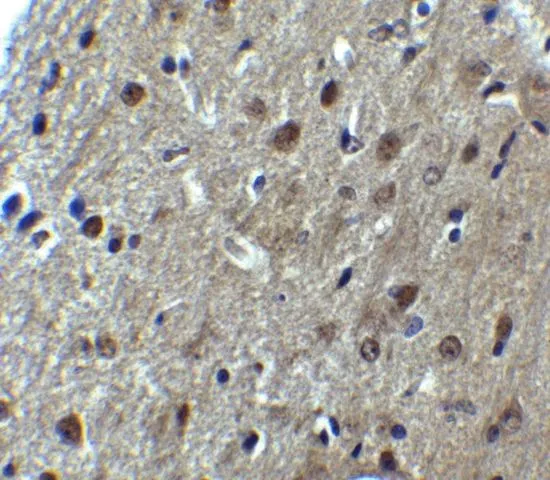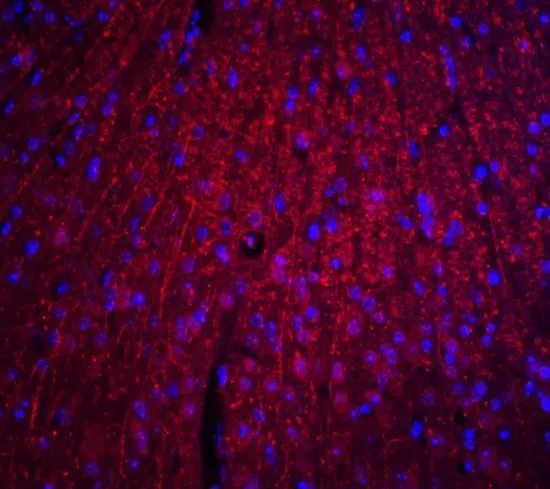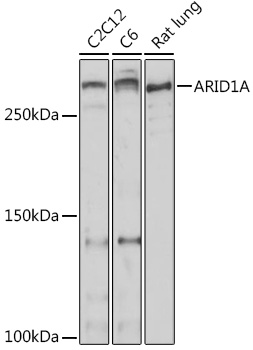
IHC-P analysis of mouse brain tissue using GTX31619 ARID1A antibody. Working concentration : 5 microg/ml
ARID1A antibody
GTX31619
ApplicationsWestern Blot, ELISA, ImmunoHistoChemistry, ImmunoHistoChemistry Paraffin
Product group Antibodies
TargetARID1A
Overview
- SupplierGeneTex
- Product NameARID1A antibody
- Delivery Days Customer9
- Application Supplier NoteWB: 1 - 2 microg/mL. IHC-P: 20 microg/mL. *Optimal dilutions/concentrations should be determined by the researcher.Not tested in other applications.
- ApplicationsWestern Blot, ELISA, ImmunoHistoChemistry, ImmunoHistoChemistry Paraffin
- CertificationResearch Use Only
- ClonalityPolyclonal
- Concentration1 mg/ml
- ConjugateUnconjugated
- Gene ID8289
- Target nameARID1A
- Target descriptionAT-rich interaction domain 1A
- Target synonymsB120, BAF250, BAF250a, BM029, C1orf4, CSS2, ELD, MRD14, OSA1, P270, SMARCF1, hELD, hOSA1, AT-rich interactive domain-containing protein 1A, ARID domain-containing protein 1A, AT rich interactive domain 1A (SWI-like), BRG1-associated factor 250a, OSA1 nuclear protein, SWI-like protein, SWI/SNF complex protein p270, SWI/SNF-related, matrix-associated, actin-dependent regulator of chromatin subfamily F member 1, brain protein 120, chromatin remodeling factor p250, osa homolog 1
- HostRabbit
- IsotypeIgG
- Protein IDO14497
- Protein NameAT-rich interactive domain-containing protein 1A
- Scientific DescriptionThis gene encodes a member of the SWI/SNF family, whose members have helicase and ATPase activities and are thought to regulate transcription of certain genes by altering the chromatin structure around those genes. The encoded protein is part of the large ATP-dependent chromatin remodeling complex SNF/SWI, which is required for transcriptional activation of genes normally repressed by chromatin. It possesses at least two conserved domains that could be important for its function. First, it has a DNA-binding domain that can specifically bind an AT-rich DNA sequence known to be recognized by a SNF/SWI complex at the beta-globin locus. Second, the C-terminus of the protein can stimulate glucocorticoid receptor-dependent transcriptional activation. It is thought that the protein encoded by this gene confers specificity to the SNF/SWI complex and may recruit the complex to its targets through either protein-DNA or protein-protein interactions. Two transcript variants encoding different isof
- Storage Instruction-20°C or -80°C,2°C to 8°C
- UNSPSC12352203







